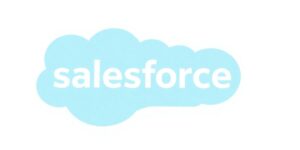Email marketing is a big deal, especially when you’re trying to keep up with all the digital noise out there. Salesforce email marketing can really change how you connect with your customers. It’s not just about sending emails; it’s about making sure those emails matter. From personalizing messages to using data smartly, Salesforce helps businesses make the most out of their email campaigns. Let’s dive into how this tool can help you reach more people and make a real impact.
Key Takeaways
- Salesforce email marketing is more than just sending out emails; it’s about creating meaningful interactions with customers.
- Personalization is key. Tailoring your emails to fit the customer’s journey can boost engagement significantly.
- Using data to drive your email strategies can lead to better results and more successful campaigns.
- Segmenting your audience allows you to send more targeted and relevant messages, which can improve open and click rates.
- Design matters. Well-crafted emails that are visually appealing can make a big difference in how your message is received.
Harnessing the Power of Salesforce Email Marketing
Understanding the Basics of Salesforce Email Marketing
Salesforce Email Marketing is a game-changer for businesses aiming to connect with their audience effectively. It’s not just about sending emails; it’s about creating meaningful interactions that resonate with your customers. With Salesforce, you can manage your subscriber list independently, without relying on social media algorithms or search engines. This control over your audience ensures your message reaches the right people at the right time.
Key Features of Salesforce Marketing Cloud
Salesforce Marketing Cloud is packed with features that make email marketing a breeze. Here are some of the standout elements:
- Automation Tools: Set up automated email journeys to engage customers at the right moments.
- Analytics and Reporting: Track open rates, click-throughs, and conversions to understand your campaign’s impact.
- Personalization Options: Tailor emails to fit the unique needs of each customer.
These tools work together to help you create campaigns that not only reach your audience but also engage them on a personal level.
Benefits of Using Salesforce for Email Campaigns
Using Salesforce for your email campaigns offers numerous advantages:
- Increased Engagement: With personalized and timely emails, your audience is more likely to interact with your content.
- Improved ROI: By targeting the right people with the right message, you maximize your marketing budget.
- Scalability: Whether you’re a small business or a large corporation, Salesforce scales with your needs.
Salesforce Email Marketing is more than just a tool; it’s a strategy that, when done right, can transform how you connect with your customers. By utilizing personalization and real-time engagement, businesses can not only meet but surpass audience expectations.
Crafting Personalized Customer Journeys
The Importance of Personalization in Email Marketing
Personalization in email marketing isn’t just a fancy trend; it’s a must-have. Customers today expect emails to be tailored to their preferences and behaviors. When you send the right message at the right time, it feels like a conversation rather than a sales pitch. This approach not only boosts engagement but also builds trust. Personalized emails can lead to a significant increase in conversion rates, as they resonate more with the audience.
How to Create Tailored Customer Experiences
Creating personalized experiences starts with understanding your audience. Segment your customer base using data such as purchase history, browsing behavior, and engagement levels. With tools like Salesforce’s Journey Builder, you can automate this process, ensuring each customer receives content that’s relevant to them. Here’s a simple approach:
- Collect Data: Gather information from various touchpoints.
- Segment Audience: Group customers based on shared characteristics.
- Automate Journeys: Use automation tools to deliver personalized content.
Tools for Personalizing Email Campaigns
Salesforce offers a range of tools to help you personalize your email campaigns effectively. The Essential email nurture journeys for SMB marketing provide a solid framework for building stronger relationships. With features like Send Time Optimization and AI-driven insights, you can refine your strategies to meet individual customer needs. These tools not only help in crafting personalized journeys but also in analyzing their performance to continuously improve your campaigns.
Personalization in email marketing is about making your customers feel understood and valued. It’s not just about selling a product but creating a meaningful connection that lasts.
Leveraging Data-Driven Strategies for Success
The Role of Data in Email Marketing
In today’s digital age, data isn’t just numbers on a spreadsheet. It’s the backbone of every successful email marketing strategy. By understanding customer behavior and preferences, businesses can tailor their messages to resonate more effectively. Harnessing this data allows marketers to send the right message at the right time, significantly boosting engagement rates. With Salesforce, you can collect and analyze data from various touchpoints, creating a comprehensive view of your customer.
Implementing Data-Driven Campaigns
Once you have a solid foundation of customer data, the next step is to use it to fuel your email campaigns. Here’s how you can do it:
- Segment Your Audience: Break down your email list into smaller, more targeted groups based on demographics, purchase history, or engagement level.
- Personalize Content: Use the data to craft personalized messages that speak directly to each segment’s interests and needs.
- Test and Optimize: Continuously test different elements of your emails—subject lines, images, and calls to action—to see what resonates best with your audience.
Analyzing Campaign Performance with Salesforce
After launching your data-driven campaigns, it’s crucial to measure their success. Salesforce provides robust analytics tools that help you track key metrics such as open rates, click-through rates, and conversions. By analyzing these metrics, you can gain insights into what’s working and what needs improvement. This continuous cycle of analysis and optimization is key to enhancing marketing strategies and improving ROI over time.
Data-driven marketing isn’t just about collecting information; it’s about using that information to create meaningful interactions with your customers. By leveraging the power of data, businesses can transform their email marketing efforts into a strategic tool for growth.
Enhancing Engagement Through Smart Segmentation

What is Email Segmentation?
Email segmentation is like sorting your socks before putting them in the drawer. It’s about dividing your email list into smaller groups based on certain criteria, like buying habits or sign-up dates. This way, you’re not just tossing out the same message to everyone. Instead, you’re making sure each email fits just right for each group. Think of it as sending a birthday card to a friend, not just a generic "happy day" note to everyone you know.
Benefits of Segmentation in Email Marketing
Segmentation is a game-changer in email marketing. Here’s why:
- Improved Engagement Rates: When emails are tailored to the interests of the recipient, they’re more likely to open and click through. It’s like sending a dog lover a coupon for dog treats, not cat food.
- Reduced Unsubscribe Rates: People stick around longer when they feel understood. Nobody wants to be bombarded with irrelevant offers.
- Increased Conversion Opportunities: By sending the right offer to the right person at the right time, you make it easier for them to say "yes" to your offer.
- Strategic Re-engagement Plans: You can win back those who’ve lost interest by sending them personalized follow-ups based on their past behavior.
Salesforce Tools for Effective Segmentation
Salesforce Marketing Cloud (SFMC) offers several tools to help you segment effectively:
- Journey Builder: This tool helps map out each customer’s journey and sends them relevant messages based on their actions and preferences. Imagine a path where every turn is tailored to your choices.
- Email Studio: Here, you can create visually appealing emails that speak directly to specific groups. It’s like crafting a message that feels like it was made just for them.
- Audience Builder: This tool categorizes your audience based on their engagement patterns, allowing you to send messages that resonate with them. It’s like having a conversation where you actually listen to what the other person is saying.
By tailoring your approach to each of these segments, customer segmentation enhances messaging effectiveness, product recommendations, and overall customer experiences. It leads to optimized campaigns and improved engagement.
Optimizing Email Design for Maximum Impact

Best Practices for Email Design
Creating a standout email design isn’t just about aesthetics; it’s about functionality too. Responsive design is key. With more people checking emails on mobile devices, your layout must adapt seamlessly to different screens. Start with flexible templates that ensure consistency across messages. Use contrasting colors to highlight buttons and clickable text. And don’t forget to add alt text to images for accessibility.
Creating Responsive Email Templates
Responsive templates automatically adjust to the screen size, providing a better user experience. They help maintain the layout whether viewed on a phone or a desktop. This adaptability is crucial as it enhances readability and engagement. When choosing a template, ensure it supports various devices and email clients.
Visual Elements That Boost Engagement
Images and colors are powerful tools in email design. They grab attention and convey messages quickly. However, use them wisely. Align images with your content and ensure they are optimized for quick loading. This not only improves user experience but also keeps readers engaged. Remember, high-quality images are essential; they should complement your content without overshadowing it.
In the world of email marketing, design is not just about looking good; it’s about ensuring your message is clear and engaging across all devices.
Integrating AI for Advanced Email Marketing
How AI Enhances Email Marketing
AI is transforming email marketing by making it more personalized and efficient. It helps analyze data to craft content that resonates with each recipient. With AI, you can optimize subject lines, automate follow-ups, and segment your audience for tailored communication. AI ensures that each email speaks directly to the recipient’s needs and interests.
AI Tools Available in Salesforce
Salesforce offers a suite of AI tools that make email marketing smarter and more impactful. These tools can automate routine tasks, freeing up time for marketers to focus on strategy. Some key tools include:
- Einstein AI: Automates data analysis and provides insights for better decision-making.
- Predictive Intelligence: Suggests the best products or content based on user behavior.
- Journey Builder: Maps customer journeys and automates personalized interactions.
Future Trends in AI and Email Marketing
The future of AI in email marketing looks promising. As AI technology advances, we can expect even more sophisticated automation and personalization capabilities. AI will continue to evolve, offering deeper insights and more precise targeting. This means marketers can expect to engage their audiences in ways that were previously unimaginable.
The integration of AI in email marketing is not just a trend; it’s a shift that is reshaping how businesses connect with their customers. By embracing AI, marketers can create more meaningful and impactful campaigns that drive results.
Measuring Success and ROI in Email Campaigns
Key Metrics to Track in Email Marketing
When you’re diving into email marketing, it’s all about numbers. You need to know which metrics matter most to gauge your campaign’s effectiveness. Here’s a quick rundown:
- Open Rate: This tells you how many folks actually opened your email. It’s a good sign of how engaging your subject line is.
- Click Rate: This metric shows the percentage of people who clicked on a link in your email. It’s a direct measure of engagement.
- Bounce Rate: You want this number to be low. It indicates how many emails couldn’t be delivered.
These metrics are your bread and butter for understanding how well your emails are doing out there. Keep an eye on them, and you’ll start to see patterns and areas for improvement.
Using Salesforce Analytics for Better Insights
Salesforce offers some pretty nifty tools for getting a deeper look into your email campaigns. With campaign ROI report, you can customize how you calculate ROI to fit your needs. This way, you can see exactly where your efforts are paying off.
"It’s not just about sending emails; it’s about understanding what happens after you hit ‘send.’ With the right analytics, you can track every step of your customer’s journey."
Salesforce Analytics helps you visualize data in ways that make sense, turning raw numbers into actionable insights. You can spot trends, identify which campaigns are hitting the mark, and make data-driven decisions to tweak future emails.
Improving ROI with Data-Driven Decisions
Once you’ve got a handle on your metrics, it’s time to put that data to work. Here’s how you can boost your ROI:
- A/B Testing: Try out different versions of your emails to see which one performs better. Change one element at a time, like subject line or call-to-action, to pinpoint what works.
- Segmentation: Divide your audience into smaller groups based on their behavior or preferences. Tailored emails often have higher engagement rates.
- Personalization: Make your emails feel personal. Use the recipient’s name, recommend products based on past purchases, or send birthday wishes.
By focusing on these areas, you can refine your strategy and make sure your email marketing is not just reaching people, but also resonating with them. This approach not only improves your return on investment but also strengthens your relationship with your audience.
Wrapping It Up
So, there you have it. Salesforce email marketing isn’t just about sending messages; it’s about making real connections with your customers. By using smart segmentation and personalization, you can turn your email campaigns into powerful tools for engagement. It’s like having a conversation with each customer, making them feel valued and understood. And let’s be honest, in today’s crowded inboxes, that’s a big deal. With Salesforce, you’re not just keeping up with the competition; you’re setting the pace. So, dive in, experiment, and watch your customer relationships grow stronger. Remember, it’s not just about reaching more people; it’s about reaching them better.
Frequently Asked Questions
What is Salesforce Email Marketing?
Salesforce Email Marketing is a tool that helps businesses send personalized emails to their customers. It uses data to create targeted campaigns that can improve customer engagement.
How does personalization enhance email marketing?
Personalization makes emails more relevant to each customer by using their preferences and past behavior. This can lead to higher open rates and better customer relationships.
Why is data important in email marketing?
Data helps marketers understand what their customers want. By analyzing data, they can create more effective email campaigns that reach the right people at the right time.
What are the benefits of segmenting an email list?
Segmenting an email list allows businesses to send specific messages to different groups of people. This can increase engagement and reduce the number of people who unsubscribe.
How can I make my emails look good on all devices?
Using responsive design ensures that emails look good on any device, whether it’s a phone, tablet, or computer. This means more people can read your emails easily.
What role does AI play in email marketing?
AI can help automate and improve email marketing by predicting customer behavior and personalizing content. This makes campaigns more efficient and effective.




